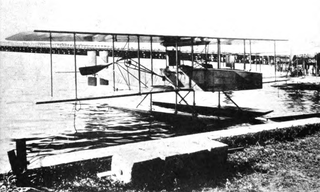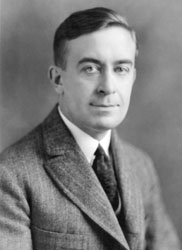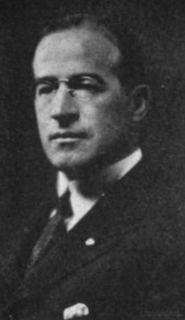 A Burgess-Dunne, based on a previous design, the Dunne D.8 | |
| Industry | Aerospace |
|---|---|
| Founded | 1910 |
| Founders | |
| Defunct | 1918 |
| Successor | Curtiss Aeroplane and Motor Company |
The Burgess Company was a U.S. airplane manufacturer between 1910 and 1918.
 A Burgess-Dunne, based on a previous design, the Dunne D.8 | |
| Industry | Aerospace |
|---|---|
| Founded | 1910 |
| Founders | |
| Defunct | 1918 |
| Successor | Curtiss Aeroplane and Motor Company |
The Burgess Company was a U.S. airplane manufacturer between 1910 and 1918.
The business was incorporated in 1910 as the "Burgess Company and Curtis, Inc." (after W. Starling Burgess and Greely S. Curtis, its co-founders with Frank Henry Russell). The company was an offshoot of the W. Starling Burgess Shipyard, of Marblehead, Massachusetts.
Burgess was the first licensed aircraft manufacturer in the United States. On February 1, 1911, it received a license to build Wright aircraft from the Wright Brothers, who held several key aeronautical patents. Burgess was charged licensing fees of $1000 per aircraft and $100 per exhibition flight. [1] In 1912 Burgess fitted some of its Wright Model F airplanes with pontoons, contrary to the Wright Company's licensing provisions, which permitted only exact copies of their designs. The license agreement was terminated by mutual consent in January 1914.
In the same month, January 1914, the organization became the Burgess Company, a name change to avoid confusion with the Curtiss Aeroplane and Engine Company. Greely S. Curtis continued as Treasurer and its major shareholder. Burgess designed and flight tested most of the aircraft that were manufactured at the two plant sites in Marblehead. Curtis was the company's financial and engineering adviser and Russell, formerly the manager of the Wright Company's Dayton factory, managed their production operations. The Burgess Company was acquired on February 10, 1914, by the Curtiss Aeroplane and Motor Company. The Burgess Company then operated as a manufacturing subsidiary producing Curtiss's naval training aircraft in late 1916 and continued to produce these aircraft under the Burgess name during World War I until its main production facility was totally destroyed by fire on November 8, 1918.
The company provided seaplanes and other aircraft to the military. The first tractor configuration airplane purchased by the U.S. Army was a Burgess H (S.C. No. 9) in August 1912. In September 1913, a Burgess Model F seaplane based on a modified Wright Model B design with pontoons, was delivered to the Signal Corps for use in the Philippines to maintain a flying school. The same aircraft (S.C. No. 17) in December 1914 was the first in the Army to demonstrate two-way air-to-ground radio communications.
| Model name | First flight | Number built | Type |
|---|---|---|---|
| Herring-Burgess A | 1910 | 5 | Pusher biplane |
| Burgess Model B | 1910 | 1 | Pusher biplane |
| Burgess Model C | 1910 | 1 | Pusher biplane |
| Burgess Model D | 1910 | 1 | License built Curtiss Model D |
| Burgess Model E | 1911 | 7 | License built Grahame-White Baby |
| Burgess Model F | 1911 | ~60 | License built Wright Model B |
| Burgess Model G | N/A | 0 | Unbuilt modified Wright Model B |
| Burgess Model H | 1912 | 6 | Training biplane |
| Burgess Model I | 1913 | 1 | Reconnaissance floatplane |
| Burgess Model J Scout | 1 | Modified Wright Model C with curved wings | |
| Burgess Model K | 1913 | 1 | Pusher biplane flying boat |
| Burgess-Dunne Model BD | 1914 | 26 | Tailless biplane |
| Burgess Model O Gunbus | 1915 | 36 | Pusher biplane fighter |
| Burgess Model S | 1916 | 6 | Biplane flying boat |
| Burgess Model U | 1 | Biplane floatplane | |
| Burgess Twin Hydro | 1917 | 1 | Twin engine biplane floatplane |
| Burgess Model HT-1 | 1917 | 2 | Sesquiplane floatplane tractor biplane |
| Burgess Model HT-2 Speed Scout | 6 | Experimental floatplane biplane fighter/observation airplane | |
| Burgess Model N-9 | 460 | License built Curtiss Model N | |

Glenn Hammond Curtiss was an American aviation and motorcycling pioneer, and a founder of the U.S. aircraft industry. He began his career as a bicycle racer and builder before moving on to motorcycles. As early as 1904, he began to manufacture engines for airships. In 1908, Curtiss joined the Aerial Experiment Association, a pioneering research group, founded by Alexander Graham Bell at Beinn Bhreagh, Nova Scotia, to build flying machines.

A seaplane is a powered fixed-wing aircraft capable of taking off and landing (alighting) on water. Seaplanes are usually divided into two categories based on their technological characteristics: floatplanes and flying boats; the latter are generally far larger and can carry far more. Seaplanes that can also take off and land on airfields are in a subclass called amphibious aircraft, or amphibians. Seaplanes were sometimes called hydroplanes, but currently this term applies instead to motor-powered watercraft that use the technique of hydrodynamic lift to skim the surface of water when running at speed.

Curtiss Aeroplane and Motor Company was an American aircraft manufacturer originally founded by Glenn Hammond Curtiss and Augustus Moore Herring in Hammondsport, New York. After significant commercial success in its first decades, it merged with the Wright Aeronautical to form Curtiss-Wright Corporation.

The NC-4 was a Curtiss NC flying boat that was the first aircraft to fly across the Atlantic Ocean, albeit not non-stop. The NC designation was derived from the collaborative efforts of the Navy (N) and Curtiss (C). The NC series flying boats were designed to meet wartime needs, and after the end of World War I they were sent overseas to validate the design concept.

College Park Airport is a public airport located in the City of College Park, in Prince George's County, Maryland, United States. It is the world's oldest continuously operated airport. The airport is located south of Paint Branch and Lake Artemesia, east of U.S. Route 1 and the College Park Metro/MARC station and west of Kenilworth Avenue.

The Aeronautical Division, Signal Corps (1907–1914) was the first heavier-than-air military aviation organization in history and the progenitor of the United States Air Force. A component of the U.S. Army Signal Corps, the Aeronautical Division procured the first powered military aircraft in 1909, created schools to train its aviators, and initiated a rating system for pilot qualifications. It organized and deployed the first permanent American aviation unit, the 1st Aero Squadron, in 1913. The Aeronautical Division trained 51 officers and 2 enlisted men as pilots, and incurred 13 fatalities in air crashes. During this period, the Aeronautical Division had 29 factory-built aircraft in its inventory, built a 30th from spare parts, and leased a civilian airplane for a short period in 1911.

Plum Island Airport, in Newburyport, Massachusetts, is a privately owned, public-use airport owned by Historic New England and operated by Plum Island Aerodrome, Inc., a non-profit corporation. It has two runways, averages 54 flights per week, and has approximately 8 based aircraft.

The Curtiss Model N was a military trainer used primarily by the United States Navy during World War I.

Augustus Moore Herring was an American aviation pioneer, who sometimes is claimed by Michigan promoters to be the first true aviator of a motorized heavier-than-air aircraft.

The Wright Model B was an early pusher biplane designed by the Wright brothers in the United States in 1910. It was the first of their designs to be built in quantity. Unlike the Model A, it featured a true elevator carried at the tail rather than at the front. It was the last Wright model to have an open-frame tail. The Model B was a dedicated two-seater with the pilot and a passenger sitting side by side on the leading edge of the lower wing.

The Wright Model C "Speed Scout" was an early military aircraft produced in the United States and which first flew in 1912. It was a development of the Model B but was specifically designed to offer the Aeronautical Division, U.S. Signal Corps a long-range scouting aircraft.

The Burgess Model I, also known as the Burgess I-Scout and the Coast Defense Hydroaeroplane, was a United States reconnaissance seaplane built for the Aeronautical Division, U.S. Signal Corps in 1913. It was of conventional Wright Model B design but with an engine mounted amidships in an enclosed fuselage, driving by chains two large pusher propellers mounted on the interplane struts. The undercarriage consisted of twin pontoons. The single example built, S.C. No. 17, was delivered to the Army in January 1913 at the Burgess Company and Curtis factory in Massachusetts, then transported to Florida to complete the training of two officers. After the assignment, it was disassembled and moved to the Philippines in September 1913, where it was in and out of service several times before crashing into the sea near Corregidor on January 12, 1915. It is notable as the first U.S. Army aircraft to conduct two-way radio communication with the ground in December 1914.

William Starling Burgess was an American yacht designer, aviation pioneer, and naval architect. He was awarded the highest prize in aviation, the Collier Trophy in 1915, just two years after Orville Wright won it. In 1933 he partnered with Buckminster Fuller to design and build the radical Dymaxion Car. Between 1930 and 1937 he created three America's Cup winning J-Class yachts, Enterprise, Rainbow and Ranger.

The Wright brothers patent war centers on the patent they received for their method of airplane flight control. The Wright brothers were two Americans who are widely credited with inventing and building the world's first flyable airplane and making the first controlled, powered and sustained heavier-than-air human flight on December 17, 1903.

Alfred Victor Verville was an American aviation pioneer and aircraft designer who contributed to civilian and military aviation. During his forty-seven years in the aviation industry, he was responsible for the design and development of nearly twenty commercial and military airplanes. Verville is known for designing flying boats, military racing airplanes, and a series of commercial cabin airplanes. His planes were awarded with the Pulitzer Speed Classic Trophy in 1920 and 1924.

The General Aeroplane Company was Detroit's first commercial airplane builder. GAC built three types of aircraft during the First World War and operated a flying school. The aircraft were the Verville Flying Boat, the Gamma S biplane with floats (floatplane), and the Gamma L biplane with wheels. All had engine installations driving pusher propellers.

The Dunne D.8 of 1912 was a tailless swept wing biplane, designed by J. W. Dunne to have inherent stability. One example was supplied to RAE Farnborough. License-built Burgess-Dunne models were used by the US Signal Corps and United States Navy and the short-lived Canadian Aviation Corps. It was the latter's first and only warplane.
The Manufacturer's Aircraft Association (MAA) was a trade association and patent pool of U.S. aircraft manufacturers formed in 1917.

The Lindbergh Boom (1927–1929) is a period of rapid interest in aviation following the awarding of the Orteig Prize to Charles Lindbergh for his 1927 non-stop solo transatlantic flight in the Spirit of St. Louis. The Lindbergh Boom occurred during the interwar period between World War I and World War II, where aviation development was fueled by commercial interests rather than wartime necessity. During this period, dozens of companies were formed to create airlines, and aircraft for a new age in aviation. Many of the fledgling companies funded by stock went under as quick as they started as the stock that capitalized them plummeted in value following the Wall Street Crash of 1929. The Great Depression dried up the market for new aircraft, causing many aircraft companies to go into bankruptcy or get consolidated by larger entities. Air racing, record attempts, and barnstorming remained popular, as aviators tried to recapture the prizes and publicity of Lindbergh's Transatlantic flight.

Frank Henry Russell was an American aviation pioneer and the first General Manager of the Wright Brothers Company at Dayton, Ohio. He went on to co-found the Burgess Company and the Manufacturers Aircraft Association. He was the Vice President and a director of Curtiss Aeroplane & Motor Company and a director of Curtiss-Wright Corporation.